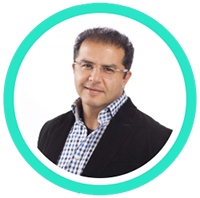Reducing Burnout
Addressing the human needs of the healthcare team to achieve better patient outcomes and experiences while reducing healthcare costs.
About a third of Canadian doctors are burned out or depressed, and nearly 1 in 10 has thought about suicide in the past year, but it’s not because they lack coping skills, according to a 2018 national survey conducted by the Canadian Medical Association (CMA). Professional burnout is characterized by loss of enthusiasm for work, feelings of cynicism, and a low sense of personal accomplishment and is associated with early retirement, alcohol use, and suicidal ideation.5, 7
Burnout affects not only physicians but also other members of the health care workforce with 34% of hospital nurses reporting burnout.16
In Daniel Pink’s book, Drive: The Surprising Truth About What Motivates Us, he discusses what motivates knowledge workers. Standard carrot-and-stick motivators don’t work with knowledge workers. They are motivated by mastery, purpose, and autonomy.
Knowledge workers are motivated by mastery, purpose, and autonomy.
What does this mean in the context of emergency medicine? How can we promote resiliency and reduce burnout?
Mastery
“the principal driver of physician satisfaction is the ability to provide quality care.7 Physician dissatisfaction, therefore, is an early warning sign of a health care system creating barriers to high-quality practice.” (From Triple to Quadruple Aim: Care of the Patient Requires Care of the Provider Thomas Bodenheimer, MD and Christine Sinsky, MD Ann Fam Med November/December 2014 vol. 12 no. 6 573-576)
The principal driver of physician satisfaction is the ability to provide quality care
For example, the management of emergency patients in a triage hallway diminishes a sense of mastery. In contrast, Simulation-based Interprofessional team training (IPTT) improves quality and safety by unmasking latent hazards in the work environment, processes, or resources while providing a safe and constructive platform to promote positive change. The BC EMN is advocating for all ED’s to conduct regular IPTT’s within the real clinical space, engaging the entire healthcare team (See: CPD for Your Community). This engagement creates an opportunity to off-load emotions, to reflect on practice, to reduce feelings of isolation, to advocate-for and actuate principles of crisis resource management, and teach strategies to mitigate cognitive errors.
Purpose
Most health care providers are drawn into our profession by a desire to be of meaningful and impactful service and to leave the world a better place. Many of us volunteer to do international service, in resource-poor environments, with significant personal risk, and for little or no financial compensation. Despite the limited resources and system challenges in other countries, most describe great satisfaction in this purposeful work. They feel energized through these experiences.
Why is it that the narrative within medical groups in Canada is mostly dominated by compensation issues? As if being paid more would create more happiness and satisfaction.
Would changing this narrative (and reframing) of our daily work in Canada result in a higher sense of meaning? It is possible to reconnect with a higher sense of purpose.
Autonomy
“Professional autonomy means physicians can exercise professional judgment to make care decisions that best meet the needs of patients, and it enables them to engage and participate in matters related to quality, patient safety, and health system improvement.” (Doctors of BC Policy Statement)
Recent systemic efforts in BC to empower and incentivize physician engagement are promising and should continue.
Conclusion
If we want to improve quality, patient experience, and cost-effectiveness, we need to address the healthcare provider’s need for autonomy, mastery, and purposefulness.
Happy and resilient people provide better care for patients. “You cannot give what you don’t have!!”


